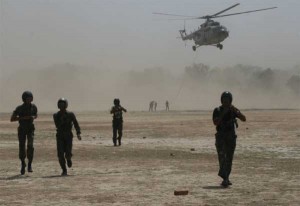The post-independence Indian Army continues to struggle with the British colonial model, ways and traditions, which served us well to a point. In fact, we were so enamored by the British ethos that we ceased to introspect about any adaptations that the uniqueness of this land and its changing values demanded. More so, because, at least for four decades and may be even more, the changes in the country were slow, therefore imperceptible.
Apart from other factors, technology is the key determinant of social and economic change. Technology enables social and cultural mobility. Before the advent of the railways, India was frozen in a time-frame of a thousand years. The society was basically agricultural, characterized by little mobility and emphasis on manpower. Joint family systems were therefore an economic necessity. The villages were independent economic units, well-served by the division of labour and hence the caste system.
The military is not only a profession, but a way of life. Institutional ethos, practices and culture of the military is much dictated by the existing threat perception, advances in technology, prosperity and educational levels of men who serve the military.
The advent of the railways, increased mobility and began to challenge the caste system in a modest way, as passengers of all castes and classes were compelled to travel together. But the impact was little. Edmund Candler in his book, The Sepoy, published in 1919 says: “I know a Rajput class regiment in which it took ten years to introduce the messing system. The Company cooking pots were accepted at first, but with no economy of space or time, for the vessels were handed round and each men use them to cook his own food in turn. The Brahmins are even more fastidious. I remember watching a class regiment at their meal in Essen position. Each man had ruled out his own pitch, and a Turk would have taken the battalion for a brigade.” This practice was observed in some Indian units even during World War II, but to a lesser degree. In one instance, in a Signal Company, the Jat troops did not have their meal because a British Officer had touched the pre-cooked items during his inspection of the company cook house.
The military is not only a profession, but a way of life. Institutional ethos, practices and culture of the military is much dictated by the existing threat perception, advances in technology, prosperity and educational levels of men who serve the military. For example, the necessity and emphasis on drill was because of the demands of musketry. The British Indian Army also underwent tremendous changes due to the change in threat perception and technology.
The East India Company expanded its rule in India with the help of Native Regiments they had raised. These regiments were basically composed of Rajputs, Brahmins and to an extent, Muslims from the Oudh region, constituting parts of present day UP and Bihar. Later, three presidency armies were raised, but soldiers in large numbers from the Oudh region served in the Bombay and Madras presidency armies as well. During that period, the threat perception was entirely internal and therefore there was no imperative for a military culture. Moreover, the Indians served only in subordinate ranks and therefore there was no emphasis on the individual growth of Indian troops. Nor, could the British impose any new social values on their men, who despite their poor economic conditions felt morally and culturally superior to their British masters.
The native troops therefore segregated themselves caste-wise in the areas where they were stationed. With the passage of time, as the expanse of the British Empire grew, the concept of cantonments was introduced, and the culture of cantonment life grew gradually. It also gave rise to the compartmentalization of civil and military spheres. The 1857 War of Independence or the ‘Sepoy Mutiny’ changed the professional and cultural ethos of the British Indian Army. It gave rise to the concept of a ‘martial race’. But the British did very little towards the educational upliftment of their troops belonging to the same martial races, as soldiering and education were seen antagonistic.





